How To Change Background Color In Rhino
COMPUTER AIDED ARCHITECTURAL Blueprint
Workshop 6 Notes, Calendar week of October one, 2018
INTRODUCTION TO LIGHTING AND RENDERING
These notes will introduce bones lighting and rendering through Rhino Render and continue on to more advanced options using the Rhino plugin for Five-Ray. Additional notes are provided on the plug-in for Maxwell for comparative purposes only. They are for optional reading only and the techniques are not required for the class.
Role 1. LIGHTING
one. Create a Rhinoceros Model with a basis plane surface and three solids as follows:
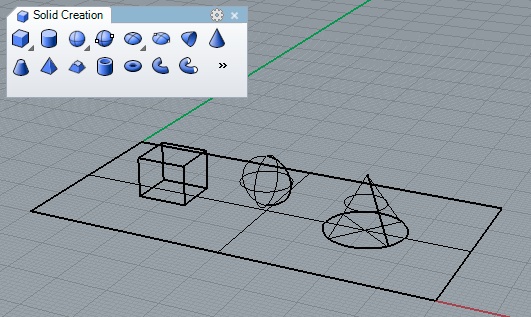
2. Open the lighting icon from upper right-hand side of screen.

3. Place a spot light in the model from the front view, entering the target and radius first, and and then the light location 2nd.
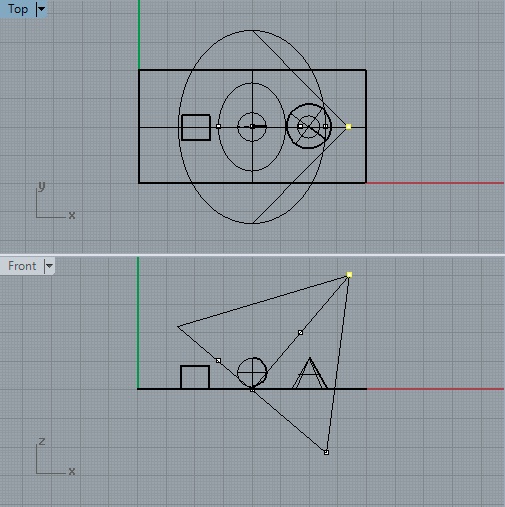
iv. Select the low-cal and turn the control points to on.
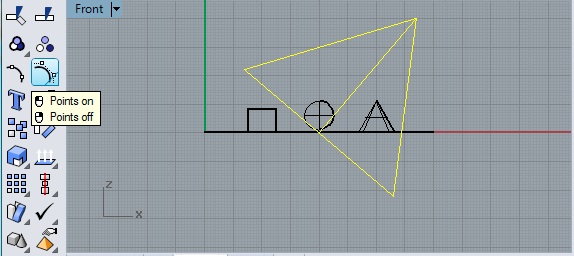
5. From the top view, motion the lighting source position to the +x, -y position relative to the ground plane.
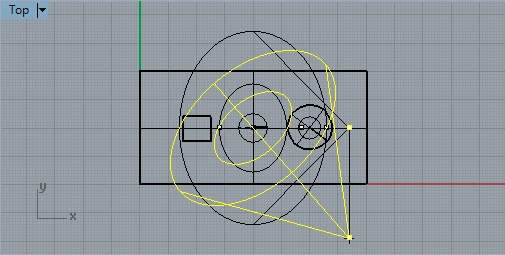
5. Actuate the perspective window, select the rendering icon, and render the view. Annotation that the background color in these renderings is black rather than defaulting to white. Run into the technique discussed later on in these notes as to how to change the groundwork color.
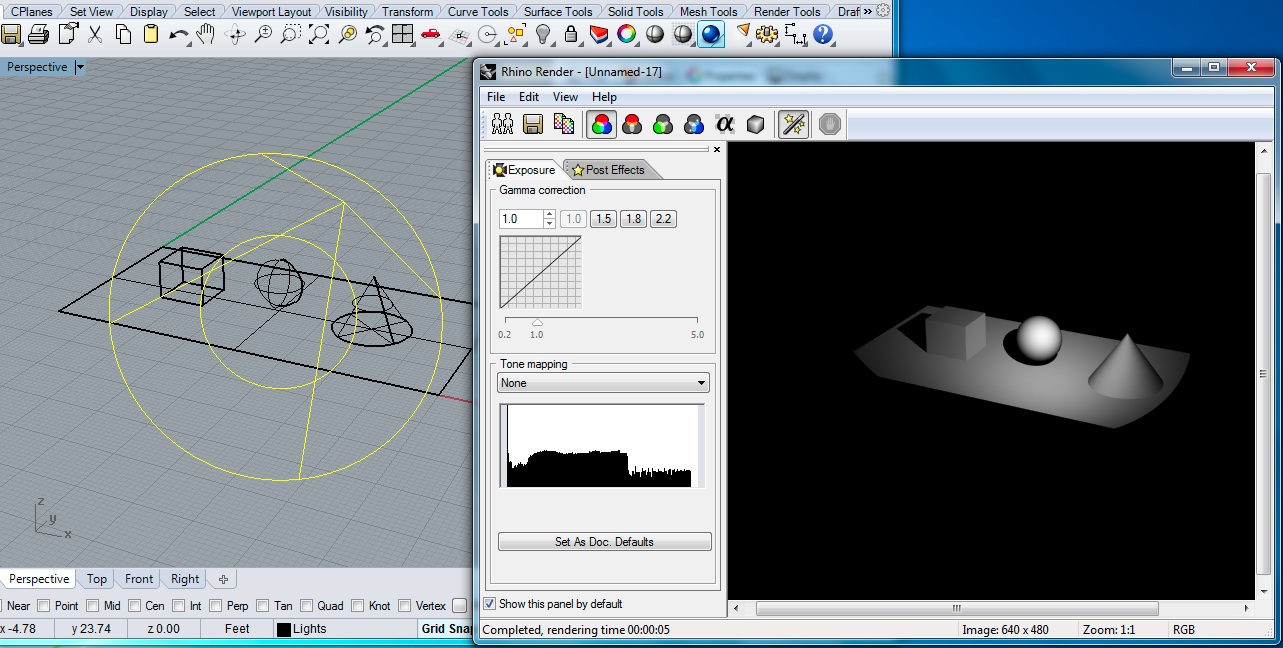
six. Following a similar procedure, create a back spot calorie-free pointing towards the center of the model and create a rendering.
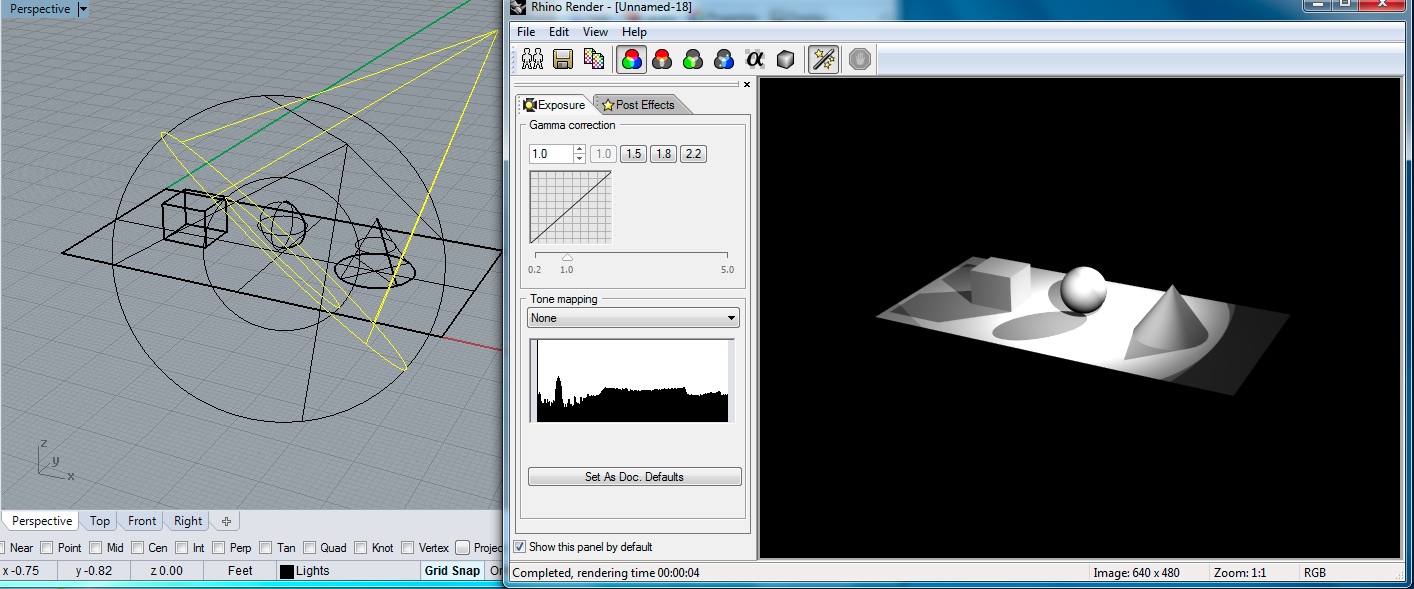
7. Select the properties icon for the back calorie-free and reduce the shadow intensity to 0 and calorie-free intensity to 50.
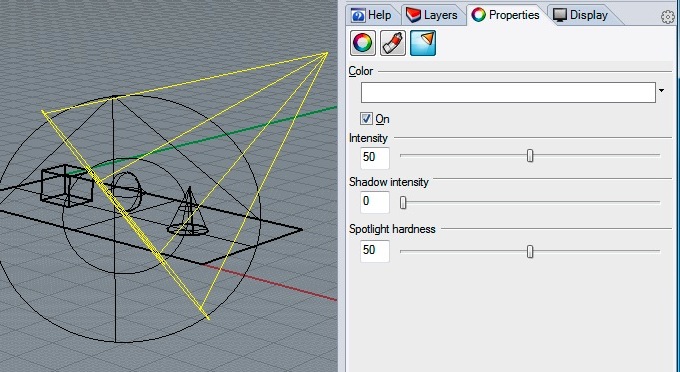
8. Alter the resolution to a mid-level size at 1280 x 720 (16:9) rather than default to the view window size. Annotation in the last rendering that there are stair step like lines on geometry running diagonally across screen (they are jagged), such as on the cone and the box. To compensate for this trouble, which is called "aliasing", change "Quality" to "Skillful Quality " to fix for a higher quality "anitialiasing" in the dialog window below.
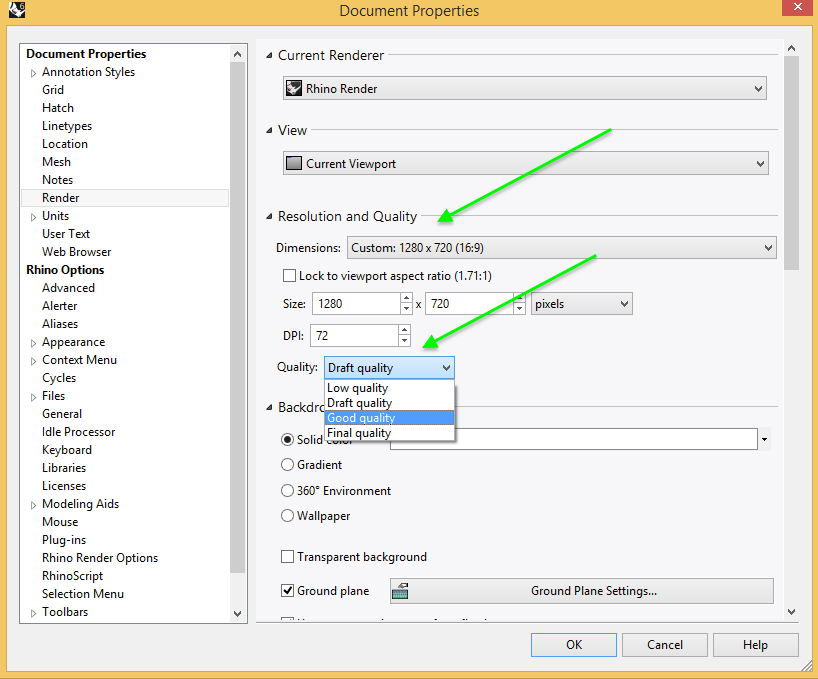
Also, in the same dialog box, to change the background of the rendering, select Groundwork "Solid Color" and select the color swatch (which is white by default in the screen capture below) and change information technology to black. Select the "OK" push at the bottom of the dialog box to exit back into main modeling mode of Rhino.
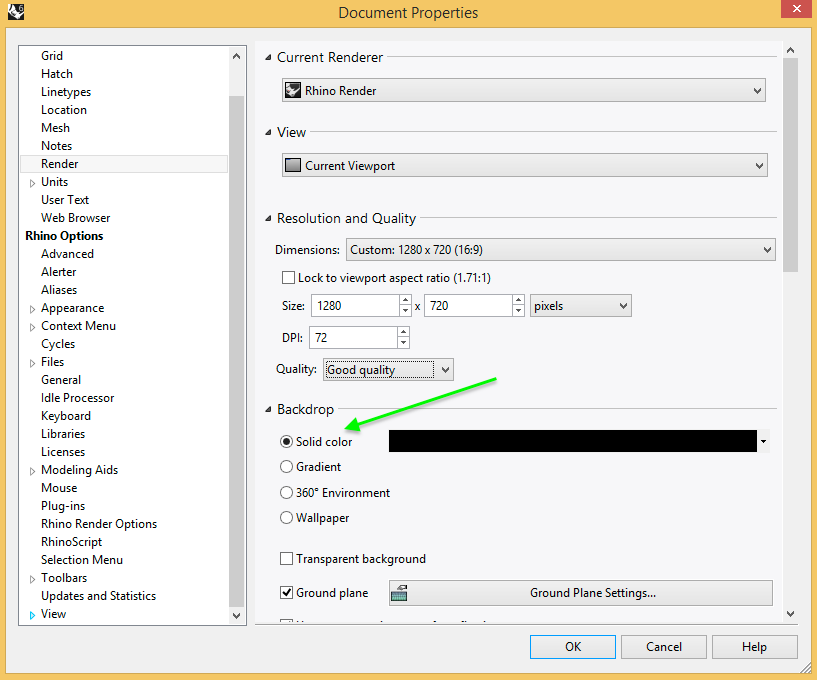
Render the perspective window again and note that the 2d light is no longer casting a shadow and too that now that there is a black background.
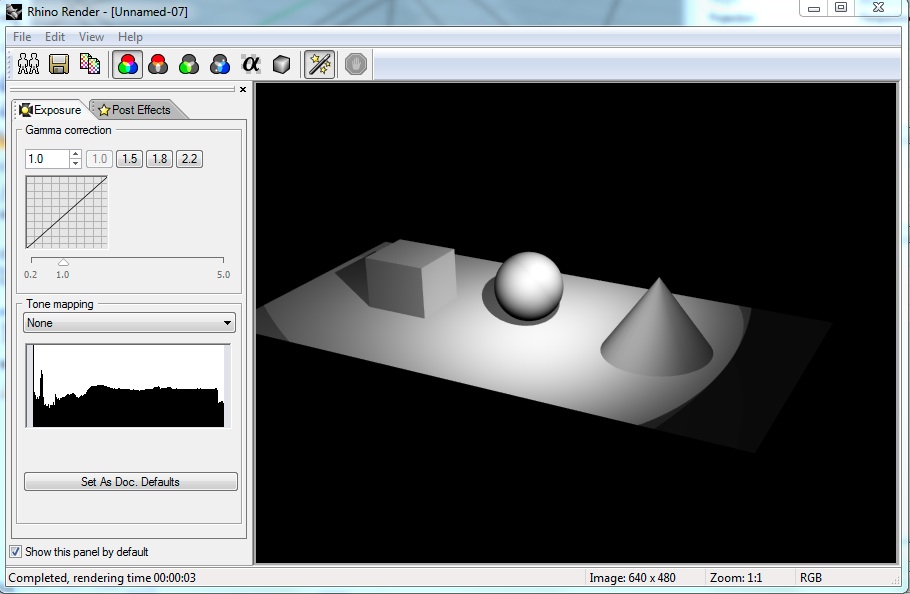
9. Add a point light to the upper left mitt corner of the model. Here it is only necessary to position the light source. That is, the betoken light is an omnidirectional low-cal and doesn't take a target or cone contour. Begin in the forepart view and continue to place the calorie-free in the meridian view like to setting the lite source locaation for the spot lights.
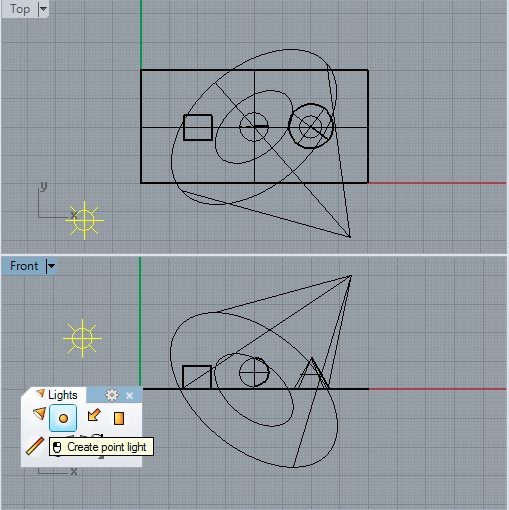
10. Using the backdrop icon, adjust the shadow intensity of the point light to 0 and change the light intensity to 50 (i.eastward., 50%).
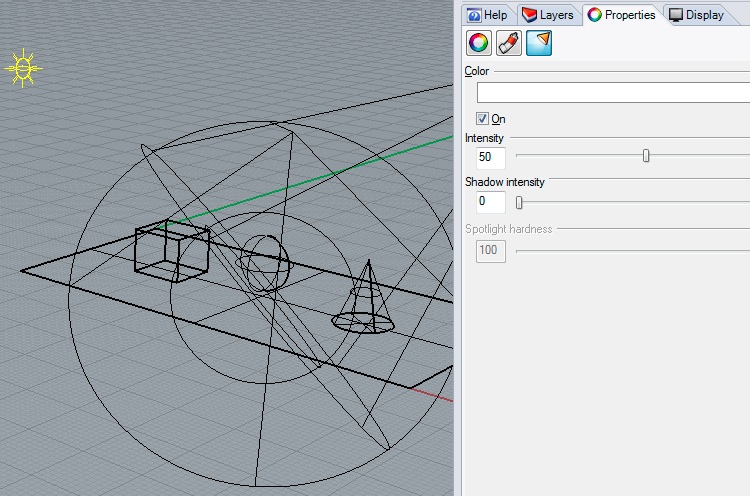
11. Render the perspective once again for a rough simulation of three point lighting.
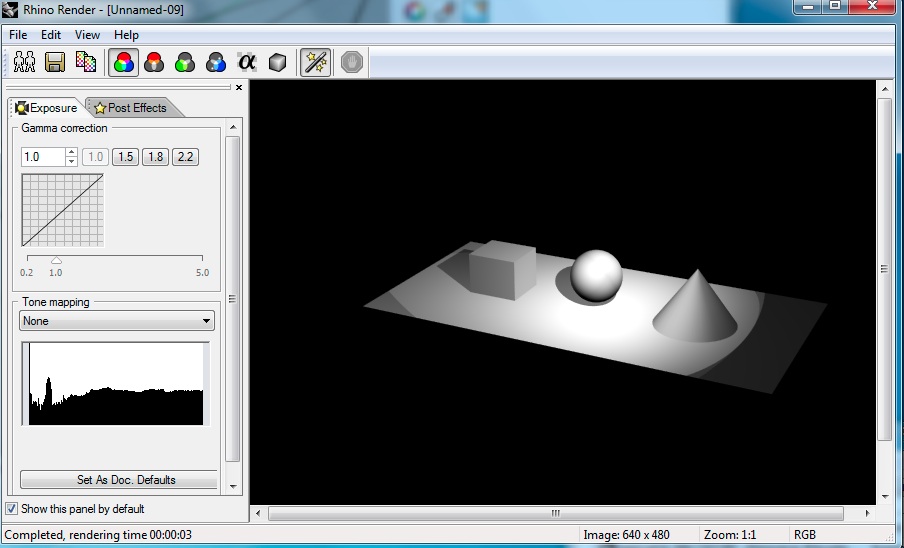
PART 2. RENDERING
ane. You can continue to arrange the antialiasing level by rendering the same model within a more advanced rendeing tool as we volition see in a later workshop tutorial.
two. Using the aforementioned properties icon as earlier, set up the material colors of the box, cylinder and cone to red, bluish and green, and also make the cone transparent. Notation that the "Textile" pull-downwardly tab is active, that the "basic" assign by method is selected, and that for the cone, the transparency value is ready to 0.75. Do not select the "Transparency Check Box" which refers to a carve up material property.
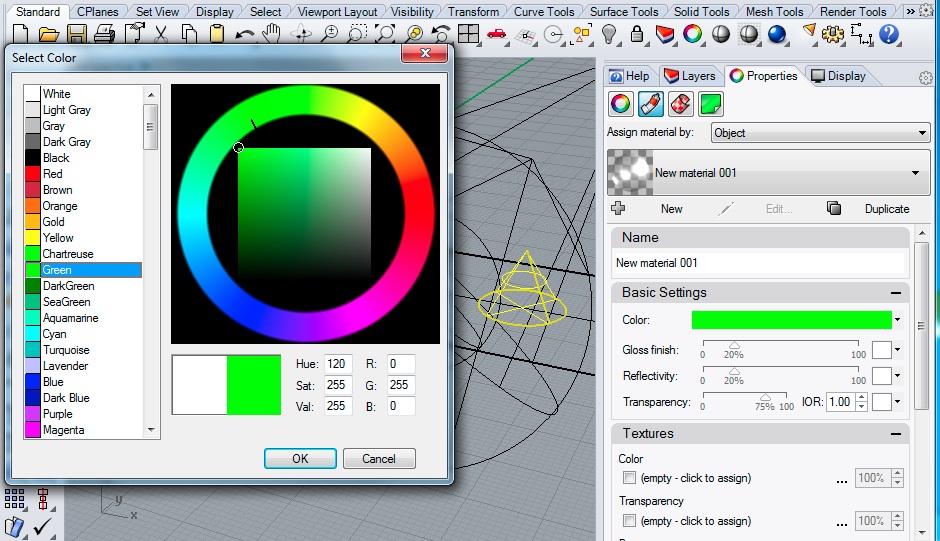
5. Rendering the view to 640 past 480 pixel resolution results in the following jpg file.

six. Download the image of penguins below by correct clicking on it and saving it to your local working binder.

vii. Now select the ground rectangle, open up up the properties dialog, select the "cloth" (tube) icon, select the check-box for "Bump" and also "empty - click to assin" link highlighted in blue in the prototype below. Load the file in a higher place through the map file interface.
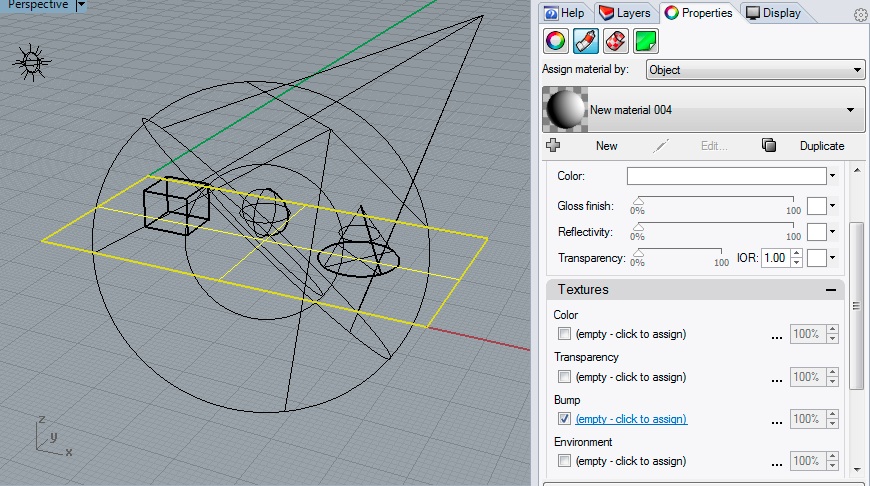
Render the result.
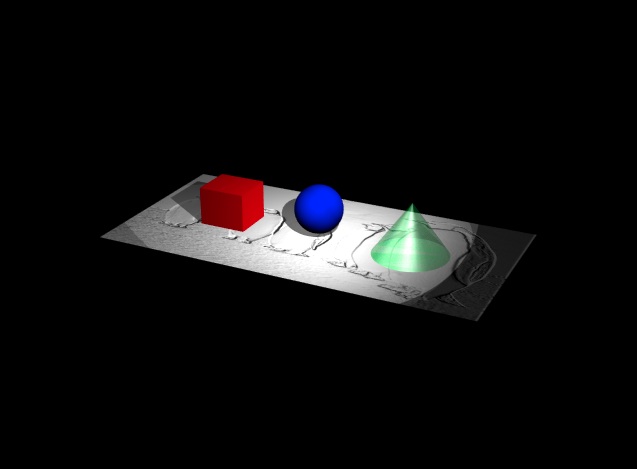
viii. Within the aforementioned dialog box, go to the texture mapping, which looks like a half roled sail of paper, and select the planar texture mapping icon.
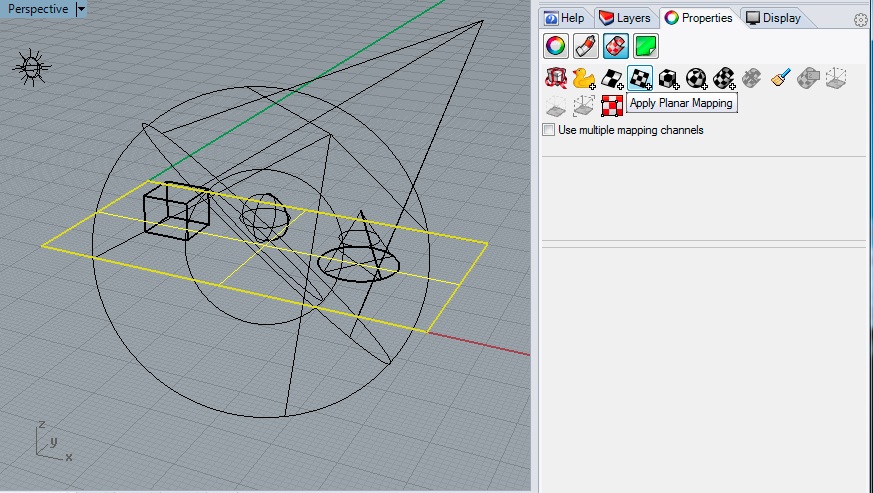
Trace the surface in the ground by a rectangle from the lower-left-hand corner to the upper-right-hand corner.
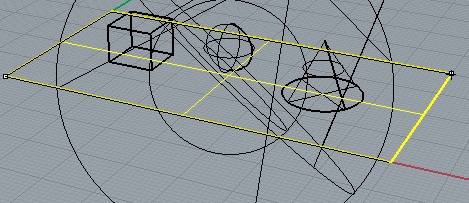
Now, continuing in the texture mapping dialog box, adust the "UVW repeat" parameters to 2.0, ii.0, and 1.0.
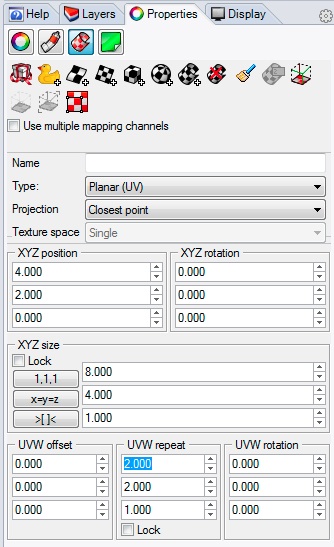
Re-render the image and note that the crash-land map is repeated twice along each axis.
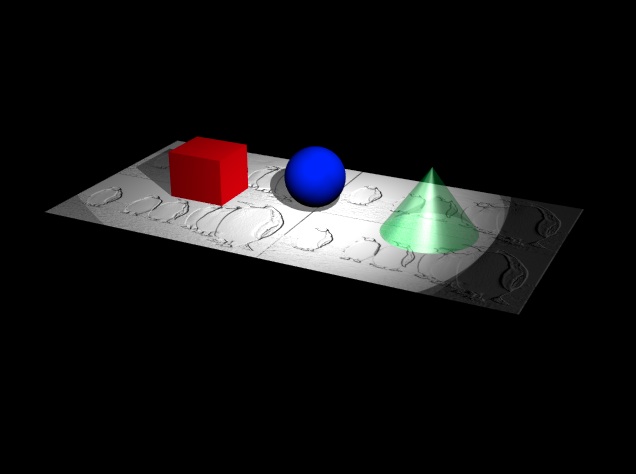
Role 3: LIGHTING AND RENDERING WITH V-Ray
Role 3 is an introduction to rendering techniques with Five Ray. We volition introduce basic rendering methods through Five-Ray for this first tutorial and then render with more advanced treatments of materials and lighting in the workshops to follow.For a more general guide and tutorial material on V-Ray see https://docs.chaosgroup.com/display/VRAYRHINO
More tutorials and reference materials tin can be accessed from within Rhino from the bill of fare item Five-Ray/Aid/Online Help. This menu detail links to an online Rhino Help site at Chaosgroup.
For a slightly older PDF documentation of the V-Ray plugin to Rhinoceros see the Five-Ray For Rhinoceros Plugin Manual . However, the user interface has changed and new functionality has been added.
In the later function of this part iii, we will switch to a V-Ray Sun. First, select the sun icon in the Rhino "Render Tools'' and using the pop-up dialog box modify the bank check-box to turn information technology off.
1. To change rendering engines from Rhino Render, go to Bill of fare detail Render> Current Return>V-Ray For Rhinoceros
two. Using the same techniques as described above, create a file with a basis plane with three objects, a box, a sphere, and a cone.
three. Using the VRay lighting tab, create a key lite, back lite and fill light without determining intensities and other backdrop.
4. Select the spot light in the front correct-mitt area of the 3D model, and in the properties dialog box, select the "spotlight" icon, and note specifically that the colour is white, intensity is set to 30.0 scalar units (a relative measurement of intensity rather than specific energy units), and that the shadows check-box is on. . Select the "Edit in 5-Ray Nugget Editor and note the appearance of the dialog box named "V-Ray Asset Editor.
5. Within the "5-Ray Asset Editor, select the arrow pointing to the right on the midde of the right hand side, and the nugget editor expands as shown below. Annotation once more that the color is white, intensity is gear up to xxx.0 scalar units. Annotation allso that the cone angle and the penumbra angle are indicated in this expanded view of the nugget editor.
6. Select the spot low-cal in the rear back right-hand side (i.e., the back light). Set the intensity to "15" and uncheck the shadows checkbox.
7. At present select the bespeak light, and also set the intensity to "fifteen" and the shadows to off.
8.Select the rotary symbol, quaternary from the left, open the "Camera" tab, and select the arrow to the correct of the words "Standard Camera" to aggrandize the camara options.
ix. Set the F-number (F-stop number) to 3. The F-number is a number determined by the aperature opening of the fake photographic camera. A lower number corresponds to a wider aperature opening that increases the exposure to low-cal. A loftier F-number corresponds to a smaller aperature opening and the lowers the exposure to light. (Note that the actual calculation of the F-number is based upon a the ratio of the focal length to the diameter. That is, F-number = focal_length/diameter. Thus, the greater the diameter of the opening the lower the F- number. ) Fix the Motion-picture show Sensitivity (ISO)" to 100 and the and the Shutter Speed to 200.
7. Select the "Perspective" window, cull a desirable view orientation, and so select the Return Icon (the bluish sphere) and render the perspective view.
If the rendering is too dark, return to the camera editor, and endeavour lowering the shutter speed or f-cease number. Note that a slower shutter speed means that the shutter remains open up and thus admits more light. Conversely, increasing the shutter speed will decrease the corporeality of low-cal entering the camera.
Alternatively, every bit described previously, lowering the F-number value of the camera means that the photographic camera aperature is larger and that the camera will admit more low-cal. Conversely, a college F-number correspondends with a smaller aperature and will subtract the corporeality of low-cal entering the camera. Yet, lowering the F-number may be used to increase the depth of field, a measure of how much within the view lies in focus. This is a technique that will exist discussed in a subsequently workshop.
vii. For another approach, within the Five-Ray Buffer Window, turn on the icons in the lower left-hand corner for "show color corrections control", "color corrections level", and "use exposure correction" (meet icons highlighted past arrows in lower left hand corner of prototype below).
8. The "testify color corrections" icon will open the "Color corrections" window. Within the window adjust the left and correct "gradiant" slider (the values at the ends of the range are 0.76 and 9.63 in the paradigm beneath) to produce a desired dissimilarity and brightness level.
9. Inside Rhino, select in turn each of the lights in the 3D model, and turn off the "enabled" cheque-box in lodge to plough off the low-cal.
10. Go to Return Tab, and toggle off the standard Rhino "lord's day" symbol. Next, go to the V-Ray Lights panel and select the sunlight to turn on the Sun control panel.
Within the Sun control panel, ready the Sun to "On", and determine the time and 24-hour interval of the year, also as set up the location either by picking a city (e.chiliad., Richmond, VA) or entering the exact latitude and longitude.
Hit OK in the dialog box above. Also, at the Rhinoceros command prompt, striking the return key or right mouse button to place the sun lite symbol at the origin of the x-y plane.
Return to see the bear upon of the direct sunlight. If necessary, adapt either camera settings and/or the exposure to go far at a good light level and dissimilarity and turn on "White Balance" so that the color is appropriate to the fourth dimension of twenty-four hour period. That is, note that the Lord's day impact on the objects in the Rhino model is tinted to reflect the color temperature of natural daylight.
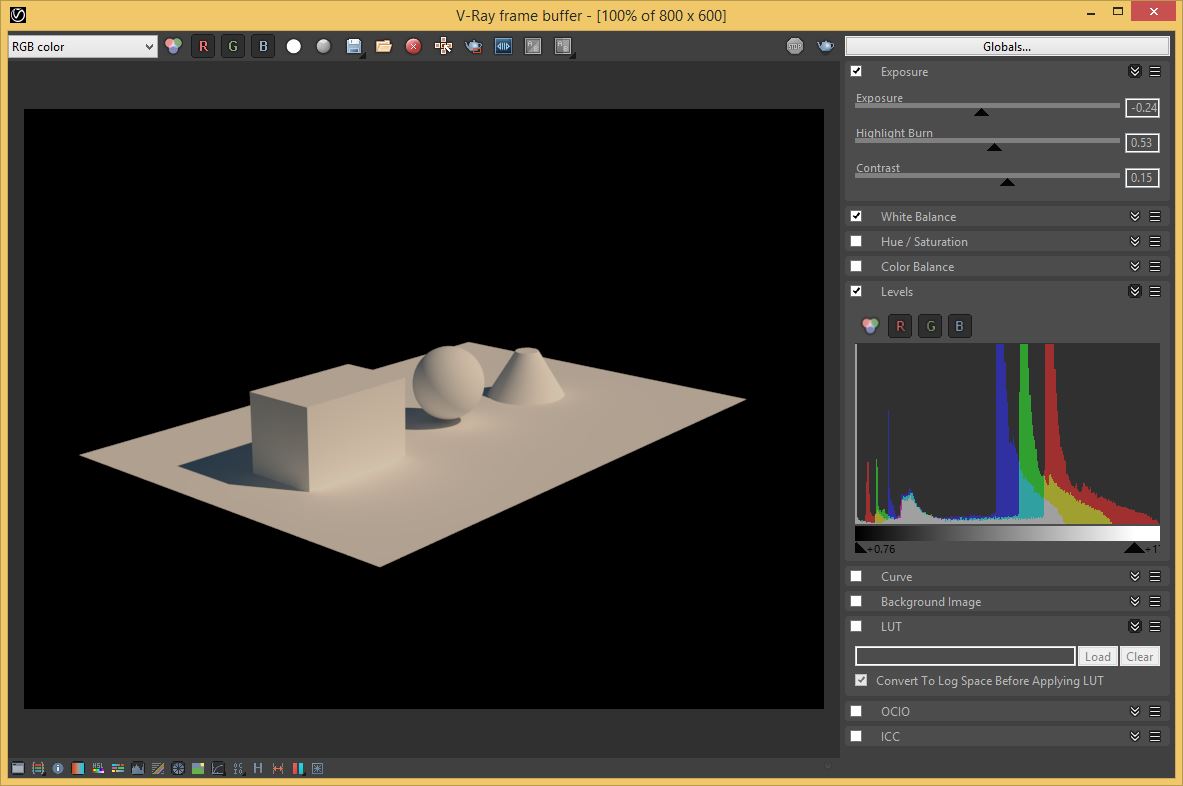
6. To command prototype resolution, go back to the V-Ray Nugget Editor and open the "Rnder Output" tab.
Change the Attribute Ratio resolution to 16:nine widescreen and Image Width/Height to 960 x 540 and test return.
Render again, and inside the 5-Ray frame buffer, select the floppy-disk "Save paradigm" icon highlighted below, and save the image to the jpg format.
7. To create materials, return to the V-Ray Asset Editor and select the start icon in the upper left corner.
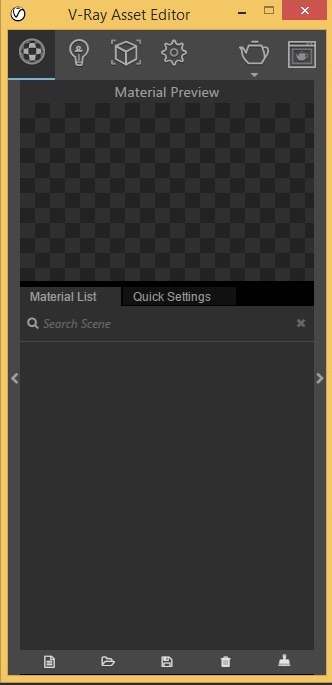
Within the Material Editor Dialog Box, select the "Add together Material" Icon in the lower left-hand corner and choose "Generic Material":
Next, right mouse-push on the discussion "Generic" and rename the materials glass1.
Select the "Quick Settings" tab and note the default settings for Diffuse, Reflection,Refraction, Glossiness, IOR (Index of Refraction) and Opacity every bit follows.
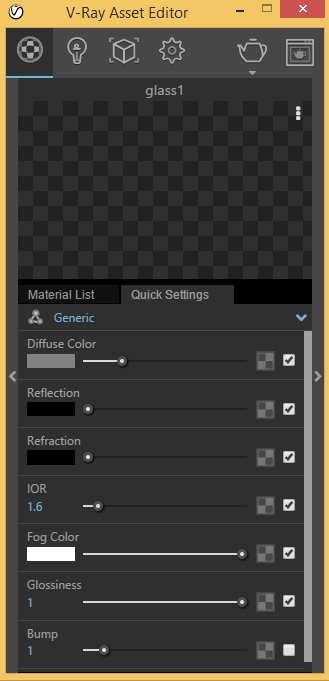
Select the "Quick Settings" tab and adjust the default settings for Diffuse, Reflection,Refraction, Glossiness, IOR (Index of Refraction) and Opacity every bit follows.
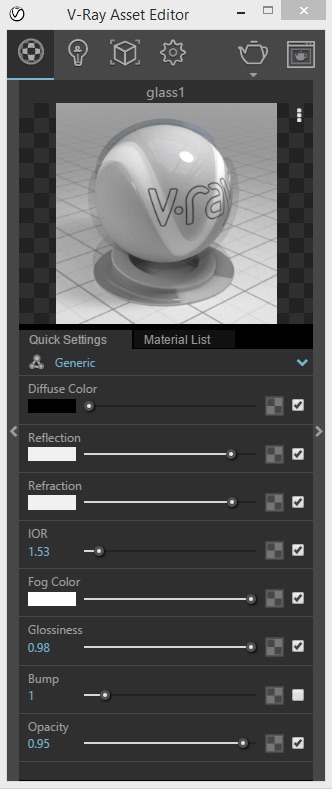
Select the sphere, right mouse-button click on the "glass1" fabric in the "Material List" tab of the asset editor, and choose the option to "Apply Cloth to Selection".
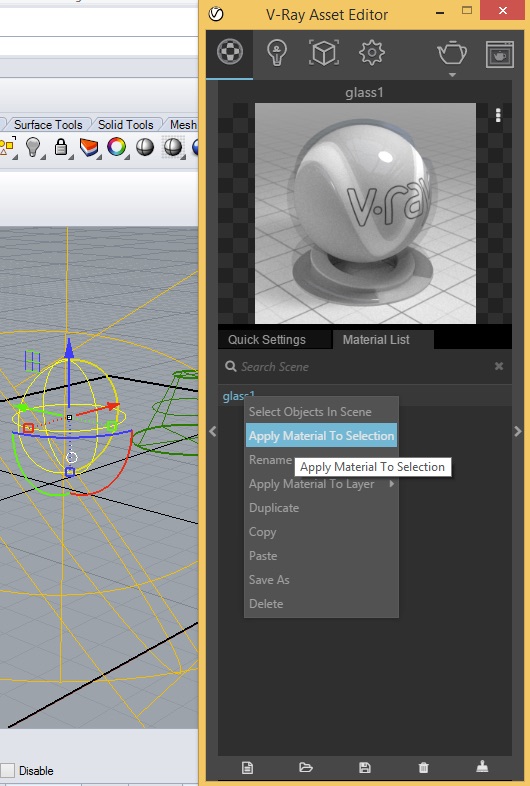
Return to the "Output" tab of the V-Ray choice editor, and with an attribute ratio of four:3 lower the resolution to 640 ten 480, and do a examination rendering:
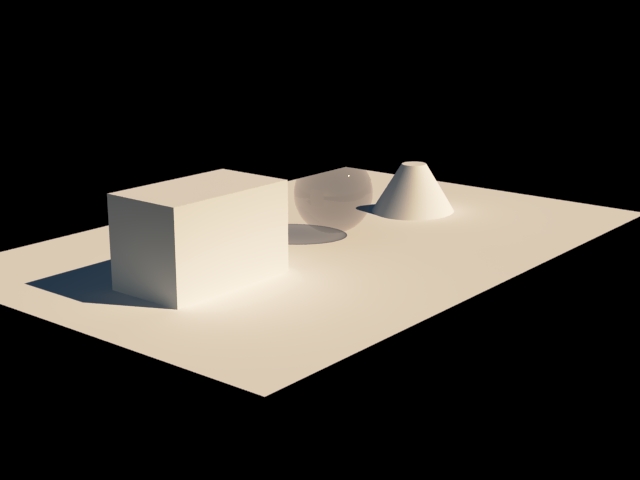
Render to the V-Ray textile editor, adjust the opacity of the glass1 material to ane and return again.
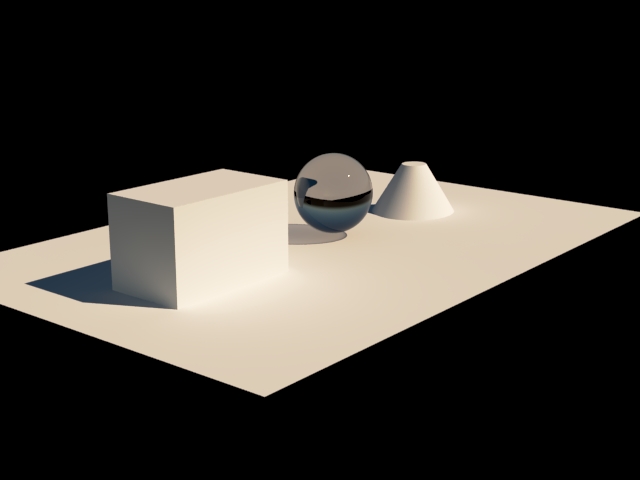
Return to the 5-Ray material editor, create a generic cloth "myCone", select the Lengthened layer tab, and modify the "Colour" to cyan, and assign the color to the cone.
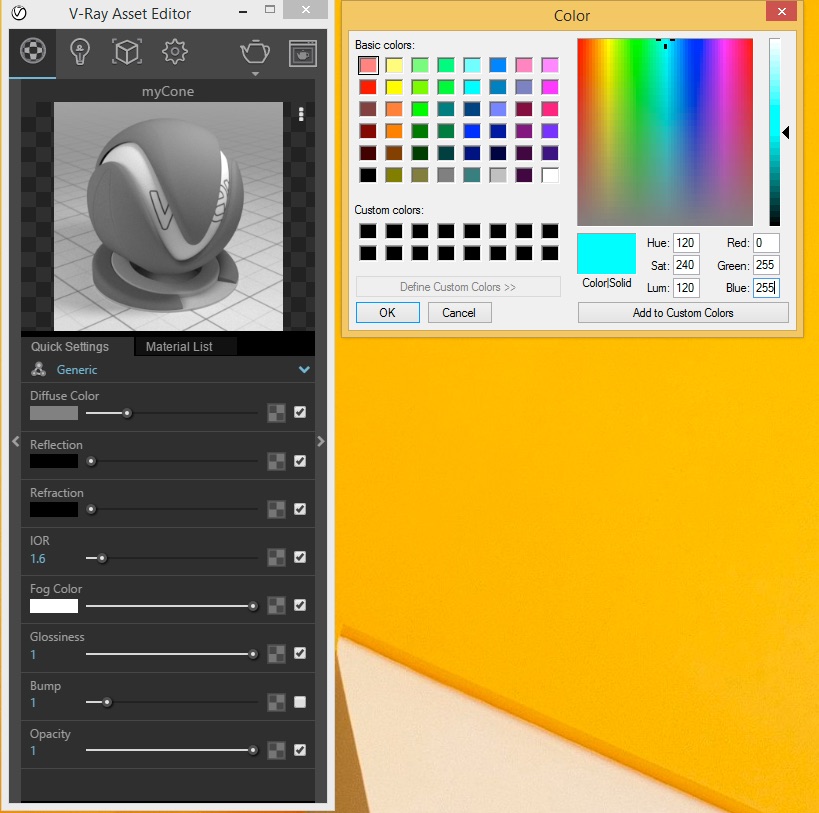
Similarly, create a material "myBox",select the Diffuse layer tab, change the "Lengthened Color" to a low-cal brown, assign the color to the box and return the consequence.
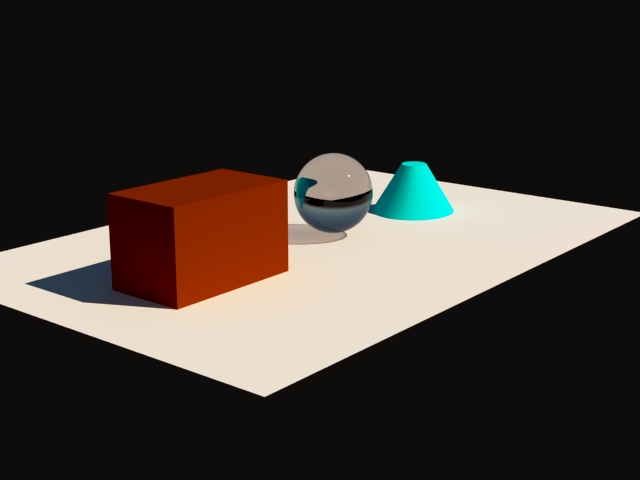
8. Using a background Sky with the V Ray Sun In this stride, we switch from the Rhinoceros Sun to a Five Ray Sun. First, select the sunday icon in the Rhino "Render Tools'' and using the popular-up dialog box change the check-box to plough it off. If not already agile, ensure that the V Ray Sun is turned on and appropriately placed in the Rhino model file. Return to the 5 Ray Asset Editor and Settings icon at the top of the dialog box, and open the "Environment" tab.
Select the checkerbox icon adjacent GI skylight, and within the Five-Ray texture editor, change the "Sun" to "/Sun Calorie-free" (the Five-Ray sun) and modify the "Sky Model" to "Preetham et al', and select the "Dorsum" botton at the bottom of the editor.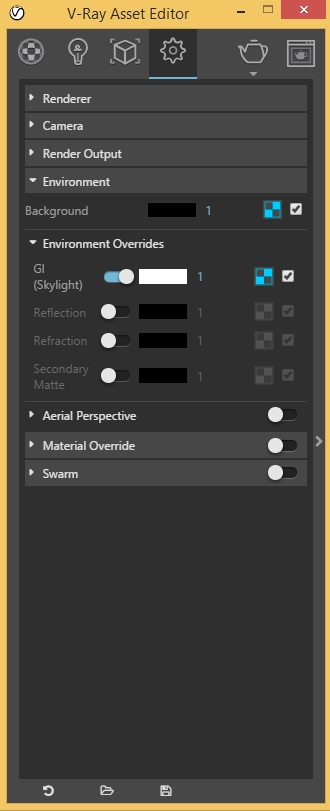
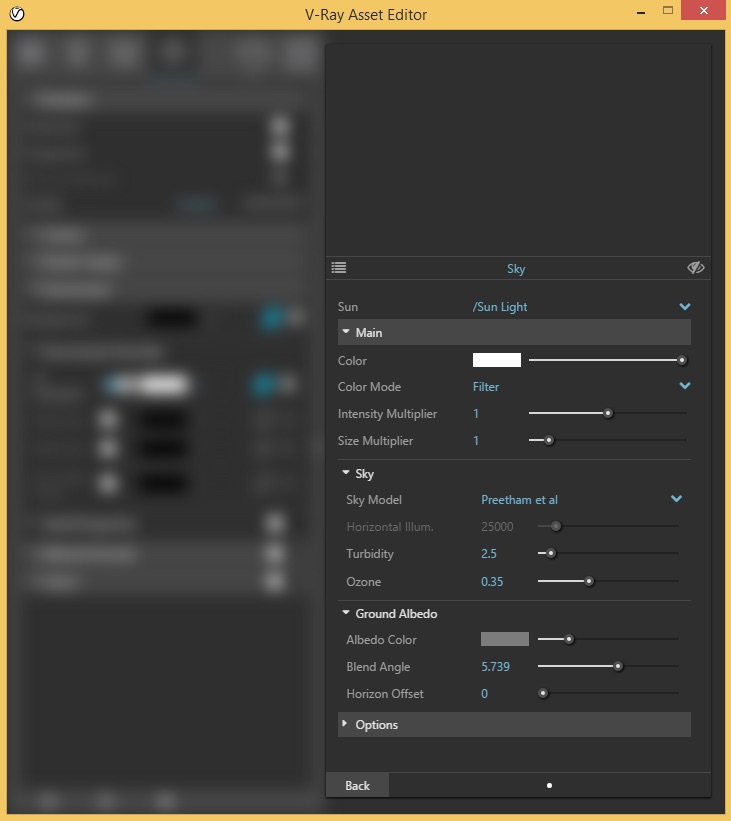
Similarly, select the Select the checkerbox icon next to groundwork and also pick the V-Ray dominicus with Preetham et. al.
Adjust the perspective view to await at the horizon and return with the the sky background.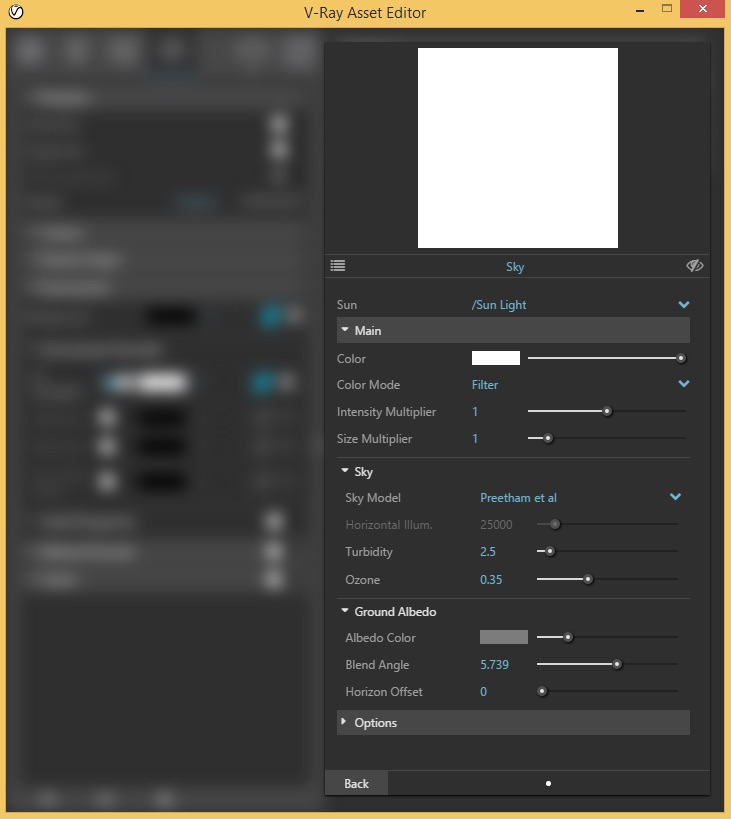 m
m
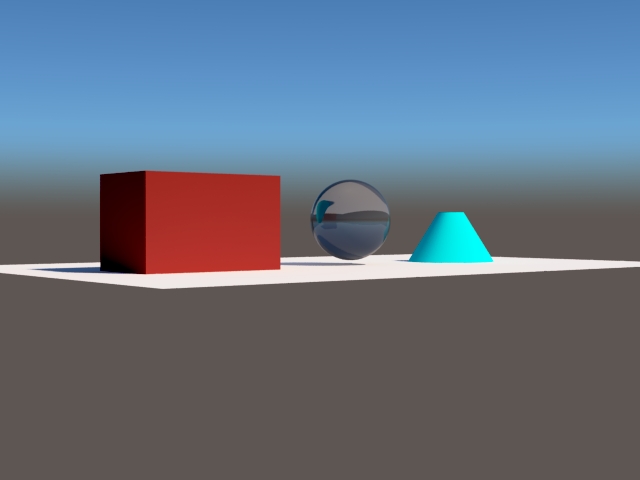
Note, still, that the ground appears to be a field of chocolate-brown. This is an upshot of the sky simulation program.
A simple workaround to this effect is to extend the groundplane so that is occludes the lower part of the background.
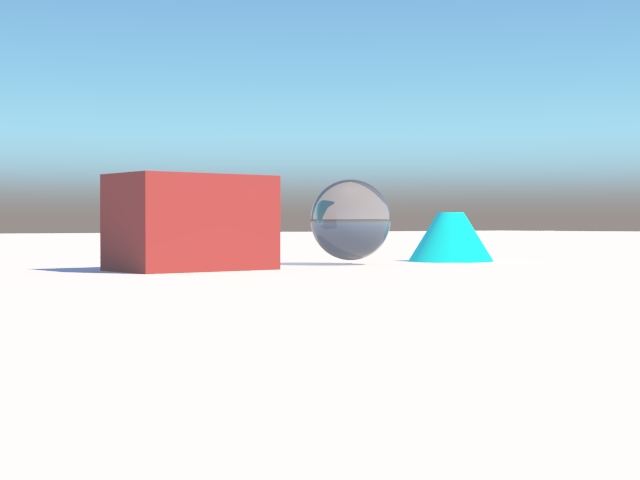
Another technique is to select a color for the background and intensify its value, such as to the number seven in the setting below, and combine information technology with the simulated Heaven groundwork. However, this begins to step abroad from a more purely simulated result.
Return to the 5-Ray asset editor, ready the background back to black and intensity 1, and under the linked menu for the sky, lower the" turbidity" to value to 2.0 in order to brand the sky less hazy, set the ozone to 1, and ready intensity to 2, and select the "Back" button.. 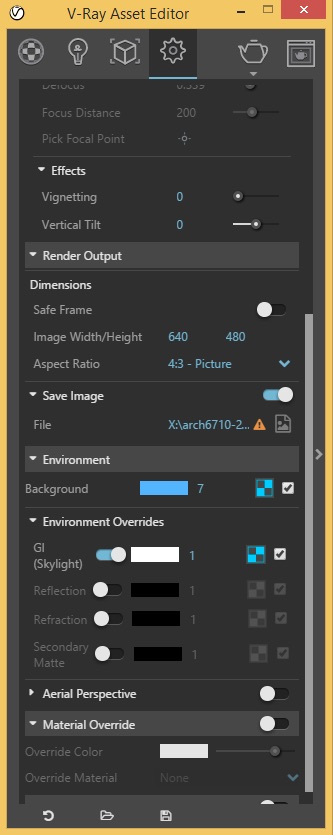
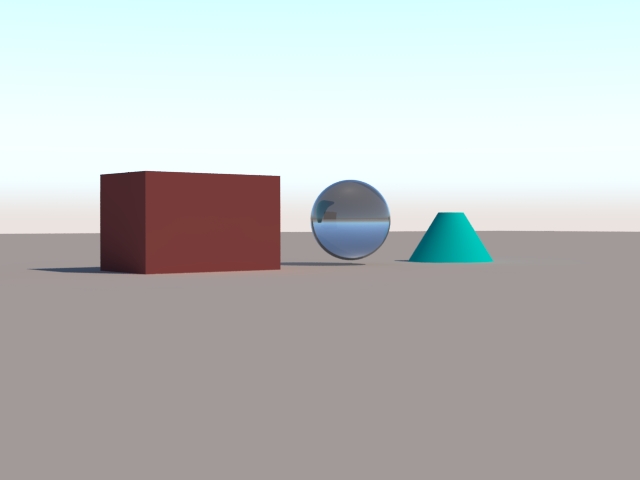
Re-return the perspective view and note the moderately deeper blueish color of the sky as compared with the earlier rendering.
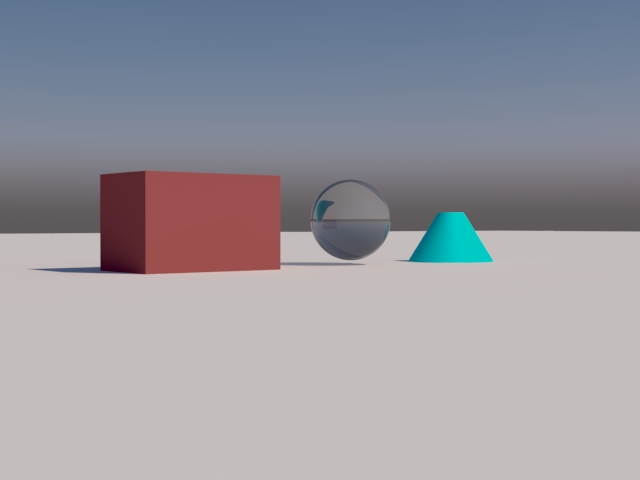
9. Working with a predefined materials library.
With the Five-Ray asset editor, right mouse-button click on "Materials" icon (shown below) and select the left arrow to select predefined materails and drag them into the materials list for the Rhino file . For example, here a type liquid/body of water procedure map is loaded.
Next add the Matal material Chrome. After loading the fabric library, the V-Ray asset editor appears equally follows:
Select the waves and chrome materials and apply to the ground rectangle and sphere in Rhino, and re-render.
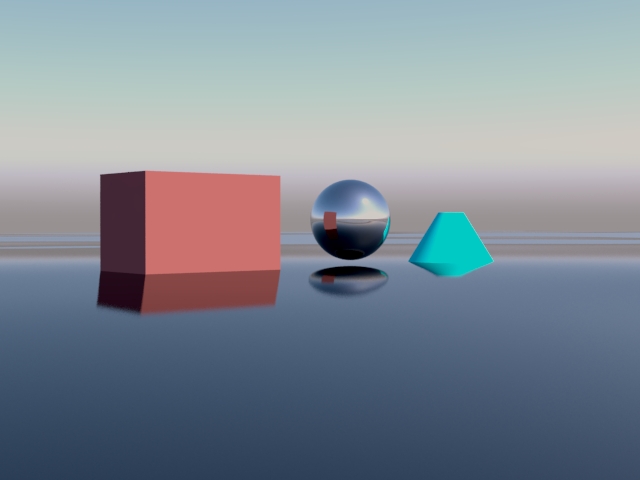
In the V-Ray asset editor, rename the water equally "myWater" and open upwardly the "Maps" tab.
Next, open the displacement tab and select the checker box next to the field for "Texture".
Inside Rhino, motility the box, sphere and cone off the ground place near i foot high. Within the texture editor, load " noise and employ the following settings.
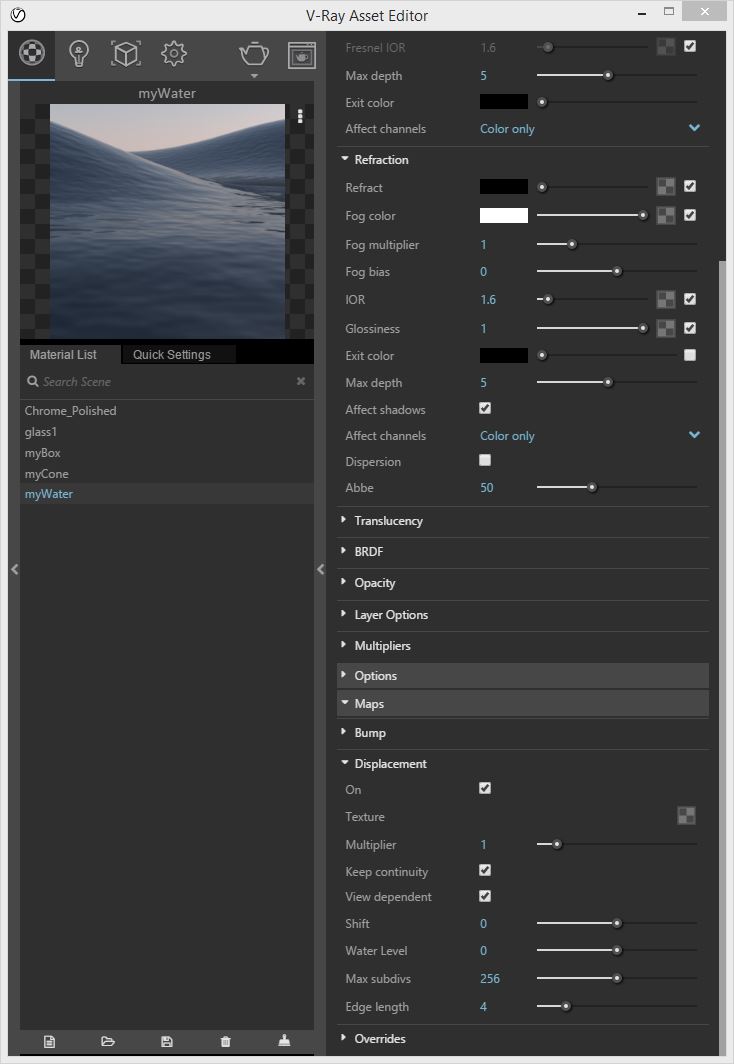
In the side by side rendering, the footing airplane, and the base of operations of the box and cone are partially submerged in the displacement map for the water These materials use more than avant-garde " mapping" techniques that will be covered in greater depth in a futurity workshop.
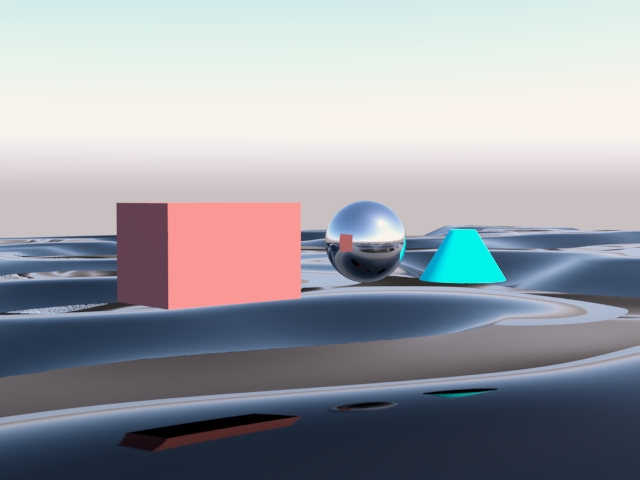
How To Change Background Color In Rhino,
Source: https://web.arch.virginia.edu/sarc6710/Handouts/whshops2018/rhino/workshop6.html#:~:text=Also%2C%20in%20the%20same%20dialog,main%20modeling%20mode%20of%20Rhino.
Posted by: broomfife1996.blogspot.com


0 Response to "How To Change Background Color In Rhino"
Post a Comment